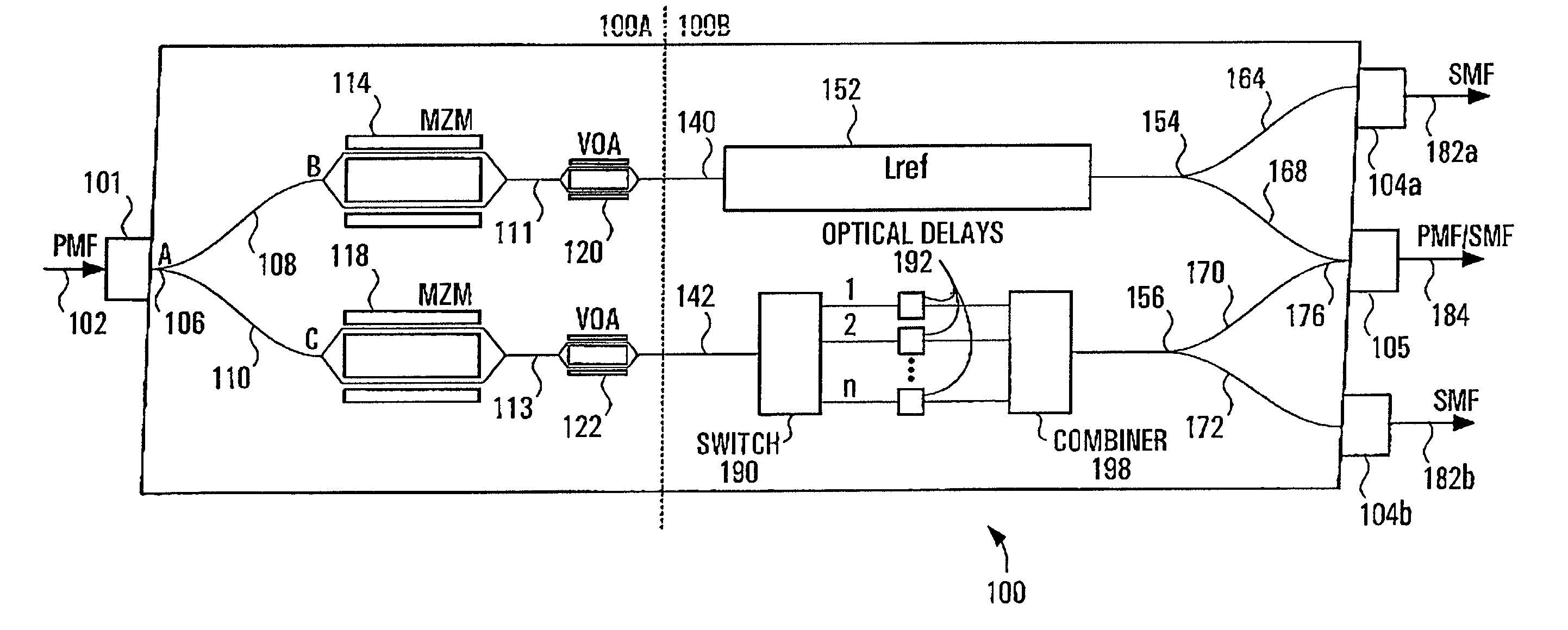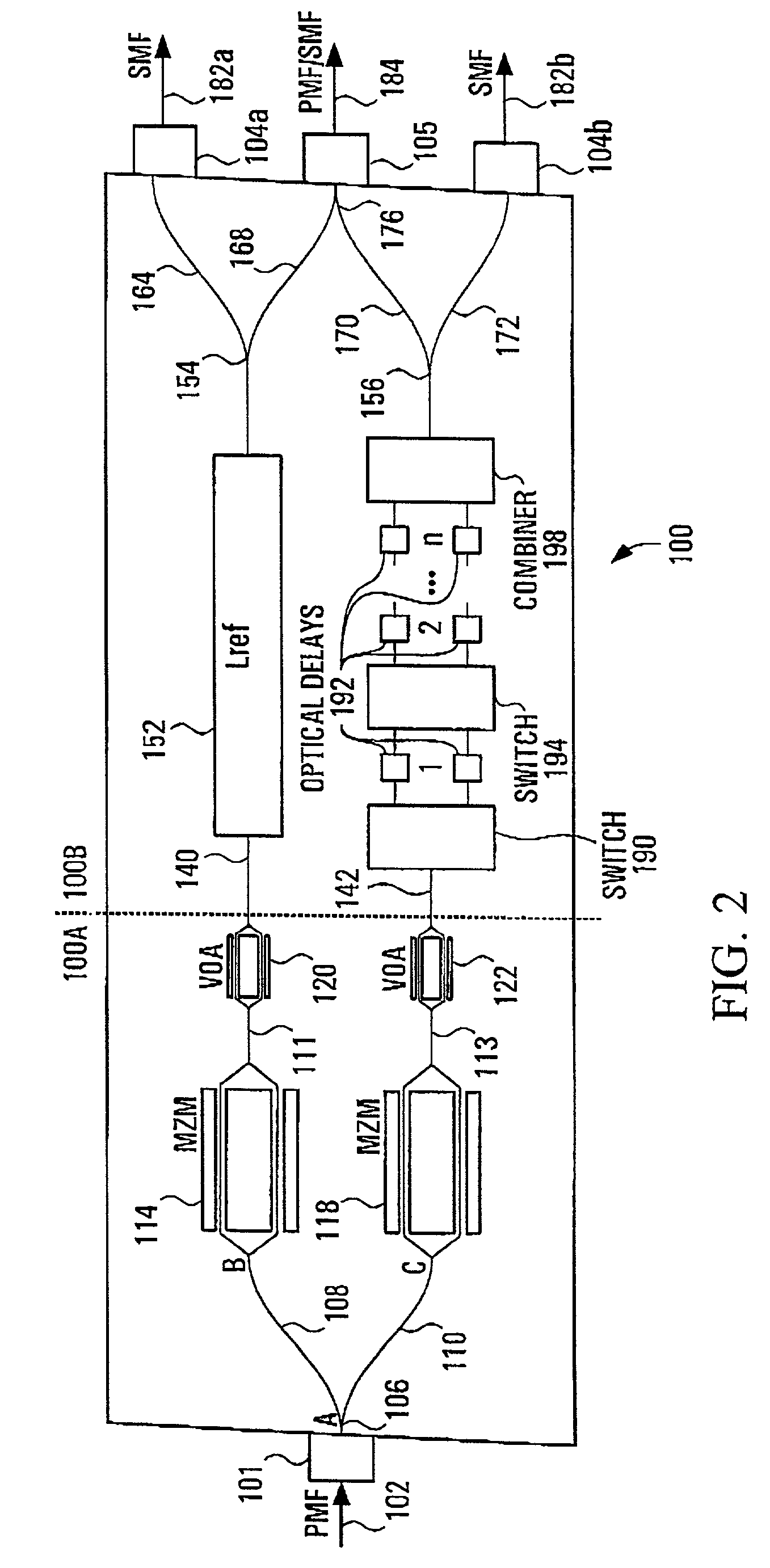Integrated high-speed multiple-rate optical-time-division-multiplexing module
a technology of optical time division and multi-channel, applied in multiplex communication, instruments, optical elements, etc., can solve the problems of high cost, high complexity, and inability to achieve higher rates per single optical channel, and achieve high-speed, difficult-to-reach targets, etc., to achieve the effect of reducing the electronic bandwidth bottleneck
- Summary
- Abstract
- Description
- Claims
- Application Information
AI Technical Summary
Benefits of technology
Problems solved by technology
Method used
Image
Examples
Embodiment Construction
[0044]Referring to FIG. 1, an integrated high-speed multiple-rate OTDM module 100 constructed according to an embodiment of the invention utilizing an optical delay switching and combining array in a parallel configuration is described. For ease of description the multiple-rate OTDM module 100 will be discussed in terms of a twin-modulator portion 100A and a time-delay portion 100B, both described in more detail below.
[0045]A twin-modulator portion 100A of the multiple-rate OTDM module 100 receives an input signal (not shown) via an input polarization maintaining fiber (PMF) 102 having an end portion secured within a fiber tube 101. The waveguide structure of the twin-modulator portion 100A comprises a Y-branch junction 106 which divides the input signal delivered by the input PMF 102 among waveguide portions 108 and 110 denoted by paths AB and AC, respectively. The twin-modulation portion 100A of the multiple-rate OTDM module 100 comprises first and second Mach-Zehnder modulators 1...
PUM
 Login to View More
Login to View More Abstract
Description
Claims
Application Information
 Login to View More
Login to View More - R&D
- Intellectual Property
- Life Sciences
- Materials
- Tech Scout
- Unparalleled Data Quality
- Higher Quality Content
- 60% Fewer Hallucinations
Browse by: Latest US Patents, China's latest patents, Technical Efficacy Thesaurus, Application Domain, Technology Topic, Popular Technical Reports.
© 2025 PatSnap. All rights reserved.Legal|Privacy policy|Modern Slavery Act Transparency Statement|Sitemap|About US| Contact US: help@patsnap.com



